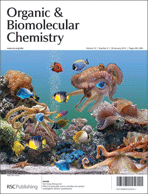Below are the top 10 cited OBC Communications ever – take a look and let us know what your favourites are:
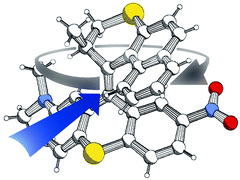
Richard A. van Delden, Nagatoshi Koumura, Annemarie Schoevaars, Auke Meetsma and Ben L. Feringa
DOI: 10.1039/B209378B
The small peptide-catalyzed direct asymmetric aldol reaction in water
Pawel Dziedzic, Weibiao Zou, Jonas Háfren and Armando Córdova
DOI: 10.1039/B515880J
Improving conversion and enantioselectivity in hydrogenation by combining different monodentate phosphoramidites; a new combinatorial approach in asymmetric catalysis
Diego Peña, Adriaan J. Minnaard, Jeroen A. F. Boogers, André H. M. de Vries, Johannes G. de Vries and Ben L. Feringa
DOI: 10.1039/B302097E
Accelerated asymmetric transfer hydrogenation of aromatic ketones in water
Xiaofeng Wu, Xiaoguang Li, William Hems, Frank King and Jianliang Xiao
DOI: 10.1039/B403627A
Direct asymmetric three-component organocatalytic anti-selective Mannich reactions in a purely aqueous system
Lili Cheng, Xiaoyu Wu and Yixin Lu
DOI: 10.1039/B701579H
A highly selective and sensitive fluorescent PET (photoinduced electron transfer) chemosensor for Zn(II)
Thorfinnur Gunnlaugsson, T. Clive Lee and Raman Parkesh
DOI: 10.1039/B309569J
Enantioselective construction of quaternary carbon centre catalysed by bifunctional organocatalyst
Tian-Yu Liu, Jun Long, Bang-Jing Li, Lin Jiang, Rui Li, Yong Wu, Li-Sheng Ding and Ying-Chun Chen
DOI: 10.1039/B605871J
A chiral molecular recognition approach to the formation of optically active quaternary centres in aza-Henry reactions
Kristian Rahbek Knudsen and Karl Anker Jørgensen
DOI: 10.1039/B500618J
Direct palladium-catalyzed alkenylation, benzylation and alkylation of ethyl oxazole-4-carboxylate with alkenyl-, benzyl- and alkyl halides
Cécile Verrier, Christophe Hoarau and Francis Marsais
DOI: 10.1039/B816374J
Organocatalytic asymmetric epoxidation reactions in water–alcohol solutions
Wei Zhuang, Mauro Marigo and Karl Anker Jørgensen
DOI: 10.1039/B512542A
If you have highly important work that would benefit from urgent publication in synthetic, biomolecular or physical organic chemistry why not consider submitting a Communication article to OBC? Find out more…











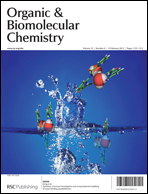 On the outside front cover of this week’s issue is a
On the outside front cover of this week’s issue is a 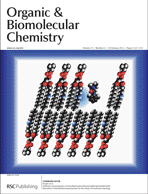 The inside front cover is work from Jonathan Guimond-Tremblay, Université Laval, et al. on the synthesis of three monofluorinated dimyristoylphosphatidylcholine derivatives for use as probes in 19F NMR studies to study the effects of drugs and peptides on model membranes.
The inside front cover is work from Jonathan Guimond-Tremblay, Université Laval, et al. on the synthesis of three monofluorinated dimyristoylphosphatidylcholine derivatives for use as probes in 19F NMR studies to study the effects of drugs and peptides on model membranes.

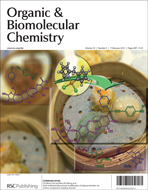 On the outside front cover a communication from Chi-Ming Che and Man-Kin Wong et al. is highlighted, showing their method for gold-mediated bifunctional modification of oligosaccharides via a three-component coupling reaction.
On the outside front cover a communication from Chi-Ming Che and Man-Kin Wong et al. is highlighted, showing their method for gold-mediated bifunctional modification of oligosaccharides via a three-component coupling reaction. On the inside front cover is an article from Brindaban C. Ranu et al. on copper catalysed cyanation of styrenyl bromides to give functionalized cinnamonitriles with preserved stereochemistry.
On the inside front cover is an article from Brindaban C. Ranu et al. on copper catalysed cyanation of styrenyl bromides to give functionalized cinnamonitriles with preserved stereochemistry.
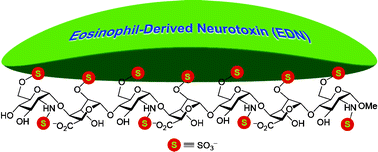 In this hot article
In this hot article 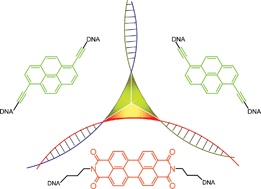 The naturally occurring 3-way junction formed at the branch point of three DNA or RNA strands is a useful structure for organising functional molecules. In this hot paper Markus Probst et al. have used the three-way junction to assemble non-nucleosidic alkynylpyrene and perylenediimide chromophores at the branch point area. The spectroscopic properties of the chromophores can be modified depending on the composition of the DNA junction, ranging from monomer or excimer fluorescence to complete quenching, demonstrating the potential of such assemblies for use in diagnostic, electronic, optical and mechanical applications
The naturally occurring 3-way junction formed at the branch point of three DNA or RNA strands is a useful structure for organising functional molecules. In this hot paper Markus Probst et al. have used the three-way junction to assemble non-nucleosidic alkynylpyrene and perylenediimide chromophores at the branch point area. The spectroscopic properties of the chromophores can be modified depending on the composition of the DNA junction, ranging from monomer or excimer fluorescence to complete quenching, demonstrating the potential of such assemblies for use in diagnostic, electronic, optical and mechanical applications